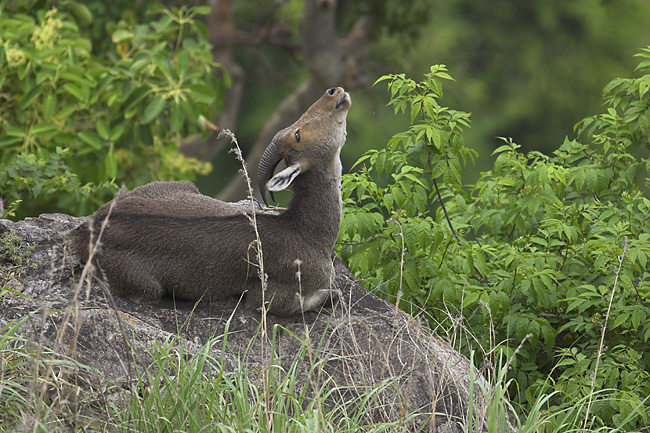In 2010, Krithi Karanth and others published a paper based on a study that was conducted to gauge and answer the question — what could be the factors that make some mammal species vulnerable to becoming locally extinct? Conservation India (CI) summarizes the scientific study. The authors selected 25 large Indian mammals for the study. These were:
- Chital, sambar, muntjac, mouse deer, swamp deer
- Blackbuck, nilgai, chinkara, four-horned antelope
- Nilgiri tahr, wild pig, gaur, wild buffalo
- Elephant, rhino
- Black bear, brown bear, sloth bear
- Jackal, hyena, wolf, wild dog
- Tiger, leopard, lion
Method
The authors partitioned India’s geographical area into a grid with 1,326 cells—average cell size of 2818 sq km, range 2461–3059 sq km.
At this cell size, experts were able to give information on species sightings with current data.
To understand the historical presence of species, geographical location records were taken from hunting, taxidermy and museum records. Historic records of species presence were compiled from museums, libraries and taxidermy firms, British imperial and district gazetteers, hunting journals and all issues of Journal of Bombay Natural History Society (from 1885–2006) and Indian Forester (1875–2006). Most records were from the years 1860–2000, with few records between the years 1760 and 1860. The authors collected approximately 30,000 records for more than 100 mammal species in India. These historic records provided geographical locations where species had been either observed or hunted.
The authors also used covariates to model extinction patterns including: time elapsed (time between the year of the historic record and 2006); presence and proportion of wildlife protected areas; proportion of forest cover; elevation; and probable human influences (population density and cultural attitudes towards the species).
Results
Using these covariates, these were the conclusions of the study:
- Protected areas reduced extinction probability for 18 mammal species (especially for large carnivores and forest-dwelling mammals).
- Species whose current habitat mostly lies outside existing protected areas – mouse deer, blackbuck, nilgai, chinkara, four-horned antelope, sloth bear, jackal, wolf, wild pig – and species for which only a tiny part of their historic range is now in protected areas – swamp deer, wild buffalo, gaur, elephant, Nilgiri tahr, rhino, black bear, lion, wild dog, tiger – will require establishment of new protected areas to ensure their future persistence.
- Higher extinction probabilities at higher human population densities were supported for 13 of the 25 species: some herbivores can persist at higher human densities. Three adaptable species – wild pig, jackal, blackbuck – were not affected adversely by human density.
- Culturally tolerated species include the nilgai, chinkara and blackbuck – particularly in Western India – and extends to other species like the four-horned antelope, jackal, wild pig, rhino and swamp deer. Culturally tolerated or forest-dwelling herbivores had lower extinction probability.
- However, there are higher extinction probabilities for mouse deer and Nilgiri tahr, which are smaller species that occur at inherently low ecological densities.
- Local extinction probabilities for herbivores and carnivores were similar. Habitat generalists (leopard, jackal, wild pig) had lower probabilities of extinction than habitat specialists (Nilgiri tahr, brown bear, rhino and swamp deer).
- The importance of high elevation habitats in reducing extinction was supported for brown bear, but not for Nilgiri tahr and black bear.
- Overall, all 25 large mammal species showed substantial probabilities of local (cell level) extinction over the past century.
In the context of India’s rapid economic growth and increasing aspirations of its growing human population, the negative impacts of many proposed development projects must be well understood before they are undertaken. Determining the factors that reduce species extinction probabilities is critical to successful conservation efforts.
Original article first published as “The shrinking ark: patterns of large mammal extinctions in India” by Krithi K. Karanth, James D. Nichols, K. Ullas Karanth, James E. Hines and Norman L. Christensen Jr. Proceedings of the Royal Society , 10 March 2010.


 CI is a non-profit, non-commercial portal that aims to facilitate wildlife and nature conservation by providing reliable information and the tools needed to campaign effectively.
CI is a non-profit, non-commercial portal that aims to facilitate wildlife and nature conservation by providing reliable information and the tools needed to campaign effectively.